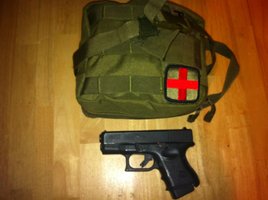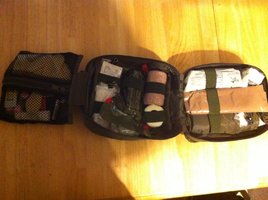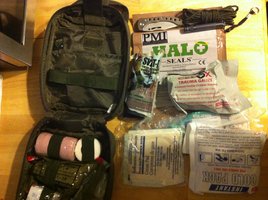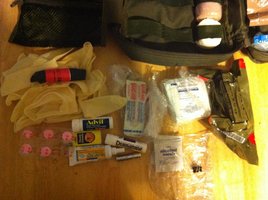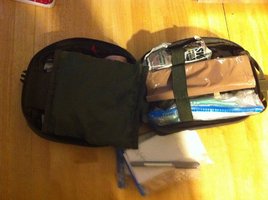Red Cross First Aid and CPR is great to know, but that's not what I'm referring to here. Also, I am in no way advocating that any government body mandate this for gun owners.
This is a GUN forum, right?!? We're all gun owners here, we keep one (or more) at home for HD and/or carry one for SD, right? Guns are designed to put holes in people.
With firearms present in the home, the chances that a family member, friend, or ourselves may be injured by a firearm accidentally discharged may be greater than our actually being involved in a self-defense shooting. Go ahead and stick your head in the sand....say "it will never happen to me." You can't rule it out unless you completely remove all firearms from your home. I'm not willing to do that and I bet you aren't either.
And even if we are involved in exchanging rounds with a BG, there's a chance that rounds (both our's and/or the BG's) may miss their intended target(s) and possibly strike bystanders, possibly someone we know and love.
I am only advocating a higher level of preparedness in this regard, above and beyond simple first aid and CPR.
Personally, I carry an ITS ETA Trauma Kit (MIL/LE) in my patrol car attached to my gear bag and an additional one on my chest rig, which is kept in the cargo area of my personal SUV.
http://www.itstactical.com/store/its-eta-trauma-kit/
http://www.itstactical.com/store/its-eta-trauma-kit-pouch-multicam/
This kit contains the following:
Z-Fold Combat Gauze (w/ X-Ray Detectable Strip – Green Package) (1)
HALO Chest Seal (2)
MojoDart Decompression Needle (1)
Naso Airway Adj. 28fr w/ Surgilube (1)
Israeli Bandage (1 – 4 inch)
Ace Bandage (1 – 4 inch)
Z-Pak Gauze (1)
Combat Casualty Card (1)
Nitrile Gloves (1 Pair)
Pencil (1)
Contents List w/ TCCC Care Under Fire Instructions (1)
I've also added to each kit:
SOF Tactical Tourniquet - Wide (1)
http://www.itstactical.com/store/sof-tactical-tourniquet-–-wide/
Mojo Medical Shears (1)
http://www.itstactical.com/store/mojo-medical-shears/
I continuously seek to improve my knowledge base and add skills to my 'toolbox'. Additional medical training is another 'tool' that makes me more rounded and valuable as a warrior.

